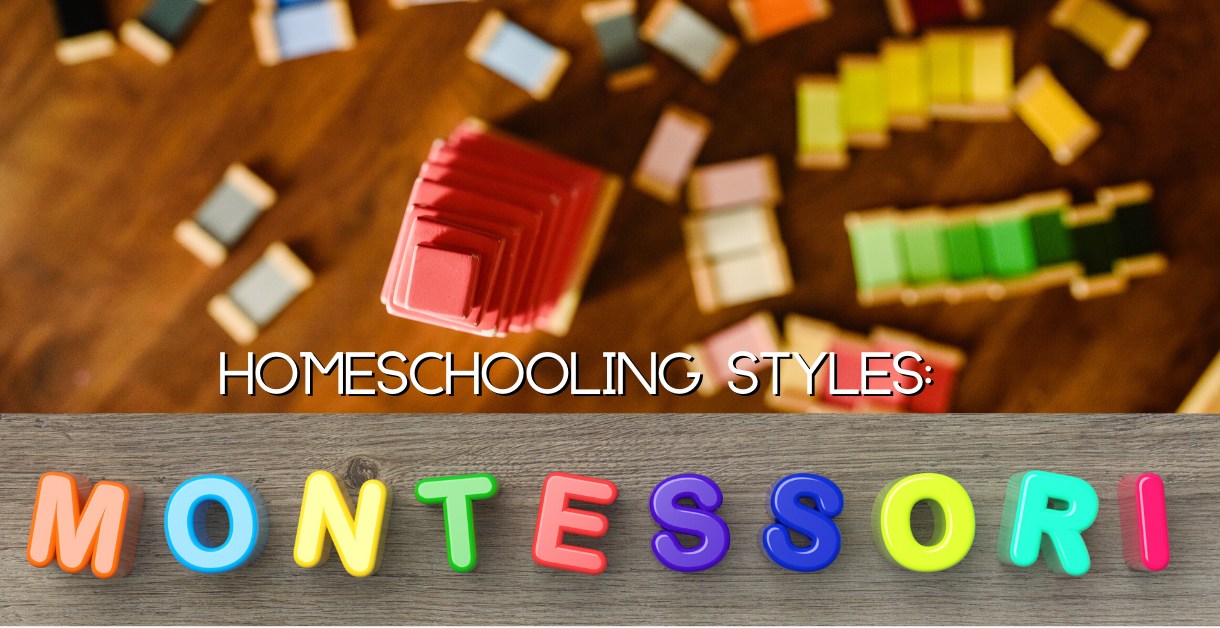Traditionally a teaching method used in specialized public and private schools, Montessori has gained popularity in some homeschools. Developed in the early 1900's by Maria Montessori, an Italian doctor and education innovator, the Montessori method fosters a child's instinctive desire to learn through hands-on interaction in a thoughtfully designed learning environment and takes a child-directed approach to education. Children are encouraged to pursue their individual interests and develop a strong sense of independence and responsibility. Parents/teachers don't "teach" their children in the typical meaning of the word, but rather guide them in discovering information, acquiring knowledge and mastering skills related to their carefully observed interests and following a particular method of presenting materials.
Some reasons this method is chosen:
Immersive education – A Montessori classroom is carefully organized with simple, focused and interesting materials and books positioned neatly at the child's level and readily available for them to discover and explore. Children are free to choose whatever activities pique their interest fostering creativity and curiosity in everything they do.
Learn by doing – Children who enjoy touching, moving, and actively exploring the world around them can benefit from this method because it includes a lot of tactile learning activities.
Self-paced learning – If you have a special needs or gifted student, the ability for them to progress at their own pace following their own interests without time limits or rigid planning can help them gain skills and confidence as well as develop a genuine love for learning.
Incorporates life skills – Because the Montessori method facilitates independence, decision making skills and active participation in learning as well as integrates practical everyday activities such as helping out around the house, taking care of pets and running errands, it allows them to see connections between life and academics.
Children of multi-ages – Montessori embraces classrooms made up of children of different ages which promotes children working together and learning from each other.
Some reasons this method may not be for you:
Parent/Teacher may need training – Most families that use the Montessori method highly recommend taking a certification class or receive some formal training. It has been said that it is a difficult method to learn by reading about it or through "on-the-job" training while trying to implement.
Not typically used for middle and high school – This method is generally used for preschool and elementary age children and may be difficult to continue into higher level learning. Some children have also found it difficult to transition from this method of learning to other methods, especially if they need to attend a traditional school other than Montessori.
There are no specific textbooks, laid out lesson plans or grading – If you or your child prefer to have your school time more well-defined and planned out and need a solid way of measuring and documenting learning progress, this method does not provide these things.
Expense and space for materials – While many have improvised and found alternatives, Montessori materials can be pricey. You will also need ample storage in your home to house them when not being used.
Requires self-motivation and independence on the part of the student – Some children thrive on structure and routine and are not yet able accept responsibility for learning something new or improve skills on their own. They also may need more instruction and do not learn well through inference.
To learn more about Montessori:
North American Montessori Teachers' Association – Montessori Information for Homeschoolers
Montessori Nature – New to Montessori Homeschooling
The Mulberry Journal – A Montessori Approach to Homeschool: Where to Start


